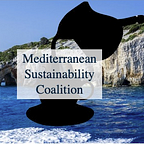Profiling energy demands, usage, and policies
An introduction of energy demand and usage in Turkey, Cyprus, and Greece. Authors: Ege Acaroglu, Cansu Culha, Aristides Nakos
Motivation
The European Union is a regulatory body for European Nations which includes Greece and Cyprus, hence has the power to motivate a certain energy market for those countries. Although Turkey is not within the EU, they benefit from certain programs set forth by the EU. As a result, the EU is a leading body in the realm of sustainability for the three nations.
As a major sponsor of the Paris Climate Accord, Europe intends to keep the temperature difference between 2100 and the pre-industrial era (1900) well below 2˚C. It aims to be carbon neutral in its operations, including manufacturing, aviation, shipping, and power generation by 2050. By 2030 it aims to have reduced emissions by 55% relative to 1990. It suggests market coupling of adjacent EU members states. A direct consequence of this technique is to connect energy grids across the EU and lower the cost of power, including renewable and fossil fuel sources of energy. Methods of energy storage are a clear technical priority, incentivizing funding of R&D and manufacturing of various methods such as energy storage by air (compressed air storage), electrochemical (batteries, capacitors), or traditional hydrostatic means (dams).
Greece
Greece is a country of 10.86 million people over 131,957 km2 of land as of 2015. Greece is projected to keep decreasing its energy usage and demands. Greece’s predominant energy consumption and energy production are liquid solid fuels and coal, respectively. Greece is heavily investing in solar wind farms, PV, and hydroelectric forms of renewable energy production.
Greece is in a favorable position to leverage solar irradiation in the range of 1,500–2,100 kWh/m2/yr, as a function of its geography with more than 60% of Greece’s land mass in the 1600+ kWh/m2/yr bracket. The average energy consumption per capita per year is ~5,000 kWh. Thus, in a worst case scenario of solar irradiation Greece would need 35 km2 dedicated for solar PV infrastructure. This back of the envelope math does not account for transmission losses, which is a key technical variable as our astute audience observed.
Turkey
Turkey is a country of 83 million people over 783,356 km2 as of 2019 and continues to grow, thus increasing its energy demands. Turkey produces coal and predominantly relies on liquid energy. Turkey is trying to be a world leader in energy; however, this does not mean that they are energy production leaders. Rather, they are the funnel between the eastern nations like Russia, Iran, and Azerbaijan and western nations in Europe. These energy sources are oil and natural gas pipelines. Turkey has increased their natural gas exploration in the Mediterranean Sea and Black Sea, showing promise to be less dependent on external energy sources, but increasingly reliant on natural gas, a non-renewable energy source.
Turkey is expecting energy demand to increase by ~5% annually. With increase in energy, Turkey will transition to meeting 30% of the energy demands with renewable energy sources by 2023. The renewable energies with the highest success potential in Turkey are hydro, wind and solar. Turkey is expected to meet a large portion of their energy demands using natural gas.
Cyprus
Cyprus is an island that is inhabited by 1.3 million people with a surface area of 9,251 km2. With rapidly growing populations, both the Republic of Cyprus (RoC) and the Turkish Republic of Northern Cyprus (TRNC) are expected to have an increasing demand for energy in the short-to-medium term. In the long term, the energy demand of the island is expected to decrease due to more efficient energy use. Cyprus imports most of its energy as liquid energy and predominantly produces renewable energy.
The RoC currently has an energy mix consisting mostly of HFO (heavy fuel oil) and diesel, with marginal increases in the use of renewables and natural gas over the past couple of years. A plan outlined by the RoC shows that the country intends to use it’s access to natural gas resources in the Mediterranean to quickly phase out the use of HFO by 2024, and from there slowly decrease natural gas production, transitioning into a (mostly) renewable energy economy by 2040. The TRNC has an energy mix that currently exists almost entirely of coal, diesel, and natural gas, with the administration of the country not yet taking any concrete steps towards the implementation of sustainable methods of energy production.
Studies conducted on the island have shown that the island receives enough solar irradiation and wind to meet the energy demands of its population with rooftop photovoltaics and aptly placed wind farms alone. However, the island currently lacks the electrical infrastructure to ensure proper storage/transmission of the energy produced by these sustainable means. This high cost of initial investment can be seen as a reason for the public sector’s reluctance to start the island’s transition into a clean energy economy.
Discussion Questions
- If natural gas plants are being built, will they really be decommissioned within 10 years of commencement, as forecast, for the sake of the environment?
- Counterpoint to 1: They might have to when factoring in the EU Cap and Trade system, which is projected to decrease carbon emissions credits by 2% through 2030.
- Cyprus is projected to start phasing out natural gas consumption, in 2035, while still extracting and exporting it. Does it matter who uses the natural gas, if it is ultimately being extracted and on a net basis releases carbon emissions?
- How connected does the energy grid have to be and how much energy storage do we need for a resilient energy infrastructure? How does one factor the inconsistent supply of energy from various renewable energy sources?
